|
|
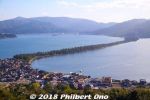
Amanohashidate is northern Kyoto's main attraction and very famous for centuries as one of Japan's Scenic Trio (Nihon Sankei 日本三景). The other two in the scenic trio are Miyajima (vermillion torii and shrine on the ocean) in Hiroshima and Matsushima (pine tree islands) near Sendai, Miyagi Prefecture. It's about 3.6 km long, totally flat, and you can cross it on foot or by bicycle (rentals available) on a dirt road in the middle. The road is lined with thousands of Japanese pine trees and closed to vehicular traffic. This view is from the northern end atop Kasamatsu Park. Near Amanohashidate Station.
|
|
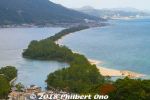
The thing about Amanohashidate is that it looks very different from different lookout points. The most popular spots to view Amanohashidate are on the hilltop on the southern end and northern end.If you have time, I highly recommend that you see it from both the southern end and northern ends. Which means you should rent a bicycle and ride across Amanohashidate.
This is from the hilltop on the southern end, from a small amusement park called Amanohashidate Viewland easily accessible via chair lift or cable car, and a short walk from Amanohashidate Station. Map: https://goo.gl/maps/yNhxjwK2ocz
This southern end connects to mainland Japan, so what you see in the distance is Tango Peninsula up north.
The left side is the west side with an enclosed, but connected ocean named Asoumi Sea. The right side is the east side with white-sand beaches facing the open ocean. Ships can still go through both sides of the sandbar through a narrow strait on the southern end.
The greenery area on the lower left facing the sandbar is Chionji Temple.
|
|
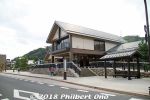
Amanohashidate Station (Kyoto Tango Railway, nicknamed "Tantetsu" or "Willer Trains") is close to Amanohashidate sandbar. Trains from JR Osaka, Kyoto, and Fukuchiyama Stations stop here.
|
|

What to see from Amanohashidate Station. Best to rent a bicycle at the souvenir shop in front of the station.
|
|
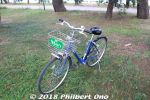
My rental bicycle. Rental bicycles also available at the entrance to the Amanohashidate sandbar.
|
|
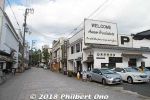
Near the entrance to Amanohashidate, this welcome sign with "One of the three famous beauty spots of Japan" has been here for decades.According to Japanese Wikipedia, the "Nihon Sankei" (Japan's Scenic Trio) label originated in 1643 by Hayashi Gaho (aka Hayashi Shunsai), a Japanese Neo-Confucian scholar who wrote a book mentioning these three sights. The expression "Nihon Sankei" was later coined in 1689 by another Japanese Neo-Confucianist scholar, Kaibara Ekken in his travel diary. So "Nihon Sankei" goes way back to the 17th century.
It's really amazing that it has stuck throughout these centuries even with Mt. Fuji not included. With Japan having so many places of beauty, it would be nearly impossible today for anyone to unilaterally declare any three sights as the "Best Three."
To the question of why it's always the best "three," the answer seems to be more complicated. It seems the Japanese have had numerical favorites for many centuries. Many odd numbers are favorites including one, three, five, and seven. This might sound familiar when you think about haiku and tanka poetry syllables, and the 7-5-3 coming of age celebration for kids. But the number "three" for "Best Three" has also stuck for centuries and still today.
|
|
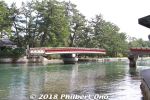
On the southern end, this bridge to Amanohashidate rotates quite often to allow boats to pass.
|
|
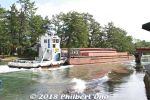
Most of the boats carry freight.
|
|
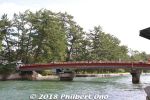
Rotating bridge for pedestrians again.
|
|
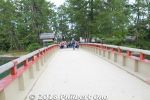
Rotating bridge for Amanohashidate.
|
|
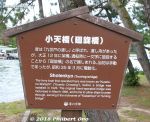
About the rotating bridge (Shotenkyo).
|
|

Sightseeing map of Amanohashidate.
|
|
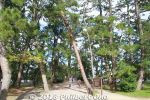
Entrance to Amanohashidate's path to the other end. Japanese pine trees all over on both sides of the road.
|
|

How Amanohashidate sandbar formed. Sand from the east coast of Tango Peninsula carried by ocean currents were repeled by the river current of the Noda River. The sand thereby accumulated from the northern end to enclose the bay.Underwater, Amanohashidate looks like a sand wall.
|
|
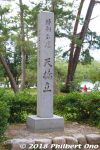
Amanohashidate marker.
|
|
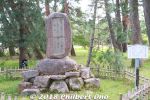
Monument for Emperor Showa's Amanohashidate poem he wrote when he visited this area in 1951.
|
|

Emperor Showa's Amanohashidate poem.
|
|
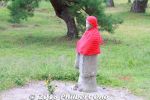
Jizo statue on Amanohashidate.
|
|
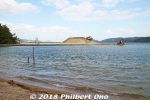
Amanohashidate's finger of sand that keeps growing. Every few years, they have to remove the excess sand, otherwise it will become another sandbar impeding shipping.
|
|
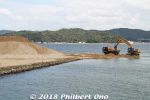
Amanohashidate's finger of sand that keeps growing. Every few years, they have to remove the excess sand, otherwise it will become another sandbar impeding shipping.
|
|
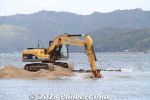
The sand spit gets shorter each hour.
|
|
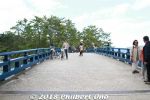
The bridge to Amanohashidate.
|
|
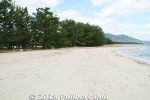
Beach on the east side of Amanohashidate.
|
|
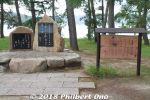
Amanohashidate poetry monument for famous travel poet Yosano Akiko and husband Yosano Tekkan. 与謝野 鉄幹(与謝野 寛)、与謝野 晶子
|
|

About Amanohashidate's pine trees.
|
|

Wild birds found at Amanohashidate. They only wrote the scientific names of the birds. Looks like they include the seagull, egret, heron, sparrow, and cormorant.
|
|
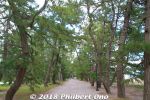
Cycling on Amanohashidate through thousands of Japanese pine trees. It takes 10-15 min. by bicycle without stopping. But there are a number of monuments, shrine, commemorative pine trees, and beaches to photograph along the way. So it took me 30-40 min.
|
|
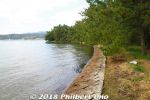
West side of Amanohashidate with no beaches.
|
|
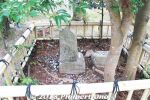
Swordsman Jutaro Iwami's testing stone.
|
|

About swordsman Jutaro Iwami's testing stone.
|
|

Would you believe a cannon on Amanohashidate?
|
|

The cannon was never based or used on Amanohashidate. It was originally from the Battleship Kasuga. Donated by the Imperial Navy to the village in 1923 to promote the Imperial Navy.
|
|
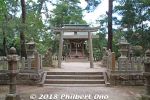
Near the cannon is Amanohashidate Shrine.
|
|
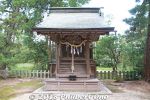
Amanohashidate Shrine
|
|

About Amanohashidate Shrine.
|
|
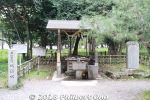
Near Amanohashidate Shrine is this well of pure spring water named "Iso-shimizu" (磯清水) famous since the Heian Period.
|
|

About "Iso-shimizu" (磯清水).
|
|

About "Iso-shimizu" (磯清水) well.
|
|
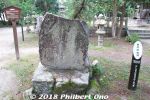
Poetry monument for Buson, a famous poet.
|
|

About Buson, a famous poet.
|
|
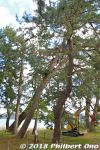
Many pine trees have names.
|
|
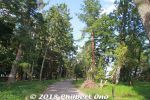
Path on Amanohashidate going north. Almost endless forest of pine trees. Very pleasant cycling ride or walk.
|
|
|
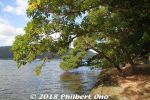
West side of Amanohashidate.
|
|
|
|
|
|
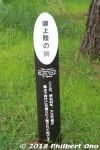
Marker for Emperor Taisho's visit. Anybody who is a somebody has visited Amanohashidate.
|
|
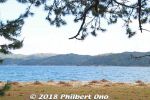
The ocean and beach.
|
|
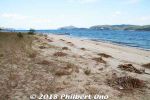
This part of the beach had many little piles of driftwood which they were cleaning up.
|
|
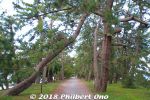
A few pine trees died or were knocked down.
|
|
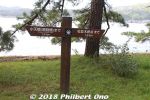
Good to know how far away you are.
|
|
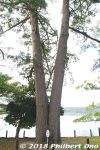
Wedded pine trees on Amanohashidate. (夫婦松)
|
|
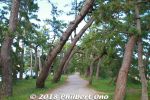
Wind-blown pine trees.
|
|
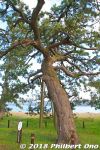
Pine tree for the sawn maiden's clothes. 羽衣の松
|
|
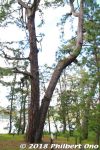
Looks like another wedded pair of pine trees, but it is named "Good Friends pine trees." なかよしの松
|
|
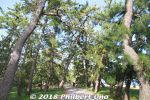
Don't ever get tired of the scenery.
|
|
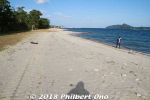
Sunny beach on Amanohashidate.
|
|
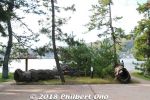
The Twin Dragon Pine Trees were broken. 双龍の松
|
|
|

East edge of Amanohashidate looking toward Kasamatsu Park on the hill.
|
|
|
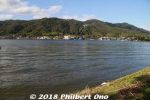
East edge of Amanohashidate looking toward Kasamatsu Park on the hill.
|
|
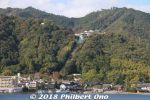
Kasamatsu Park on the hill as seen from Amanohashidate.
|
|
|
|
|
|
|
|
|
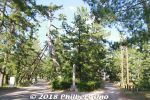
Fork in the road. Go left.
|
|
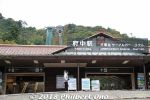
Fuchu Station is the Cable Car and Chair Lift station to go up to Kasamatsu Park on the northern end of Amanohashidate.
|
|
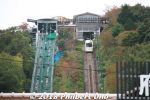
Cable Car and Chair Lift station to go up to Kasamatsu Park.
|
|
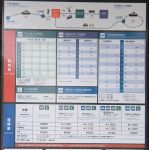
Time schedule and fares for Cable Car and Chair Lift. The chair lift runs non-stop so it's faster than waiting for the next cable car.
|
|
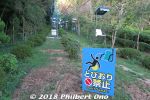
If you're not afraid of heights, take the chair lift. They keep telling you not to jump off even if you dropped something.
|
|
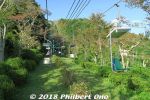
Chair lift to Kasamatsu Park.
|
|
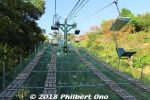
Chair lift to Kasamatsu Park.
|
|
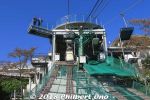
Arriving Kasamatsu Park on the chairlift.
|
|
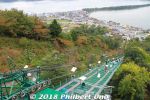
Chair lift to Kasamatsu Park.
|
|
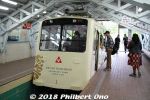
Cable car if you're afraid of heights.
|
|
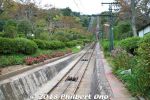
Cable car to Kasamatsu Park.
|
|

Cable car to Kasamatsu Park.
|
|
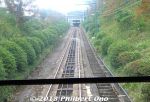
Cable car to Kasamatsu Park.
|
|
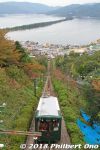
Cable car to Kasamatsu Park.
|
|
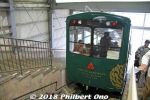
Arriving Kasamatsu Park on cable car.
|
|
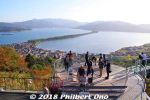
Amanohashidate as seen from the northern end atop Kasamatsu Park.Amanohashidate is a sandbar created since thousands of years ago by opposing ocean currents carrying sand. According to Japanese mythology, Amanohashidate was created during the age of gods (before man appeared). The great god Izanagi in Heaven, built a long floating ladder-bridge from Heaven to Earth so he could see his wife the goddess Izanami who was living at Moto-Ise Kono Shrine on Earth. However, in a single night while he was asleep, the bridge collapsed and fell to Earth, where Amanohashidate is today. And so if you view it upside down at Kasamatsu Park, it's supposed to look like a bridge to heaven which is what "Amanohashidate" means.
|
|
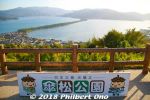
Amanohashidate as seen from the northern end atop Kasamatsu Park.
|
|
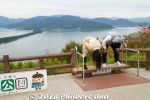
Look at Amanohashidate upside down.
|
|
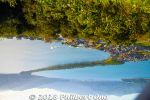
Upside down, it supposed to look like a bridge to heaven.
|
|
|
|
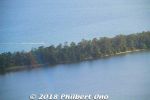
Closeup of Amanohashidate.
|
|
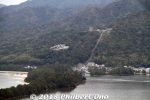
Southern end of Amanohashidate. Amanohashidate Viewland can be seen.
|
|
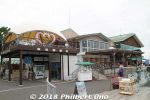
Kasamatsu Park has the usual touristy restaurants and shops. Nice benches and no amusement park.
|
|
|
|
|
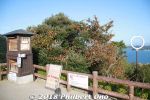
Another Ring of Wisdom on Kasamatsu Park.
|
|
|
|
|
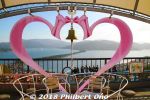
And so Amanohashidate symbolizes a link between Heaven and Earth and between two lovers. That's why you may also see heart or love symbols at Amanohashidate.
|
|
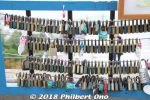
Padlocks for lovers.
|
|
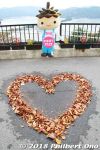
Autumn heart at Amanohashidate.
|
|

How Amanohashidate was formed, according to mythology.
|
|
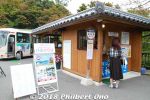
Bus stop to Nariaiji temple further up the hill, one of the 33 Saigoku Kannon Pilgrimage Temples.
|
|
|
|
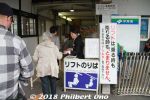
Entrance to chair lift to go down from Kasamatsu Park.
|
|
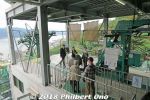
Chair lift to go down from Kasamatsu Park.
|
|
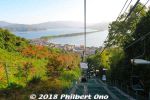
Chair lift down from Kasamatsu Park has nice views.
|
|
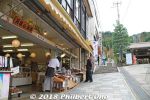
Souvenir shops near the chair lift station at Fuchu Station.
|
|
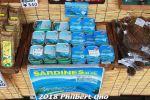
Amanohashidate sardines supposed to be good.
|
|

Old postbox and a message.
|
|
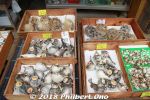
Puffer fish.
|
|
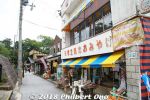
Path to nearby Moto-Ise Kono Shrine is lined with souvenir shops.
|
|
|
|
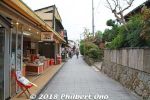
Path to nearby Moto-Ise Kono Shrine.
|
|

Moto-Ise Kono Shrine (元伊勢籠神社)Ise Grand Shrines (Ise Jingu) in Mie Prefecture are Japan's most sacred Shinto shrines. They are dedicated to the Sun Goddess Amaterasu (Shinto's most important goddess and legendary ancestor of the Imperial family) and Toyouke-Omikami (豊受大神), goddess of agriculture.
|
|
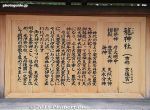
About Moto-Ise Kono Shrine (元伊勢籠神社). Before Ise Jingu was established around the 7th century (or earlier), a number of shrines for these two deities were temporarily or permanently established in various locations including this Kono Shrine. These pre-Ise Jingu shrines are prefixed with "Moto-Ise." Kono Shrine worships five gods and one of them is Toyouke-Omikami (豊受大神), the same goddess of agriculture worshiped in Ise.
|
|
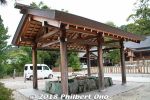
Purify yourself here.
|
|
|

Moto-Ise Kono Shrine torii. No photos beyond this torii.
|
|
|
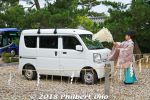
Lucky to see a shrine priest bless a vehicle for traffic safety.
|
|
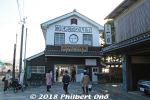
Boat dock on the northern end to cross by boat if you don't want to cycle.
|
|
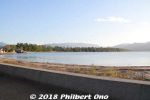
Amanohashidate
|
|
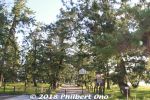
Entrance to Amanohashidate's northern end.
|
|
|
|
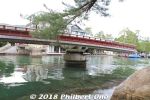
After bicycling across Amanohashidate back to the southern end, the rotating bridge again making room for a ship.
|
|
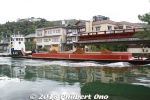
Ship coming through.
|
|
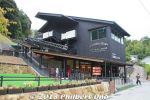
Chair lift and cable car station for Amanohashidate Viewland. Short walk from Amanohashidate Station.
|
|
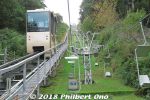
Chair lift and monorail car for Amanohashidate Viewland. Taking the chair lift is faster than the monorail car.
|
|
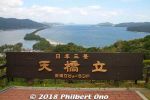
Amanohashidate from Amanohashidate Viewland (southern end).
|
|
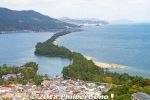
Amanohashidate as seen from the southern end atop Amanohashidate Viewland.
|
|
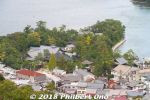
Chionji Temple
|
|
|
|
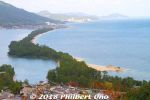
On the lower right of the sandbar, notice the finger of sand extending into the ocean. This finger keeps growing as the northern sand erodes and drifts over to it. So every few years, they have to remove the excess sand. (Notice the power shovel and dump truck working on it.) Otherwise, this little sand spit will become another sandbar across the ocean, impeding local shipping.
|
|
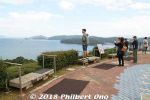
Platforms where you supposed to view the sandbar upside down.
|
|
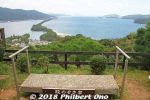
Platform to view the sandbar upside down.
|
|
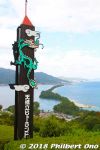
On the southern end here, Amanohashidate upside down looks like a flying dragon (hiryu 飛竜).
|
|

On the southern end here, Amanohashidate upside down looks like a flying dragon (hiryu 飛竜).
|
|
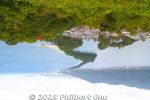
That's the dragon's head in the front and the slim tail in the back. When you see it upside down, the sandbar/dragon is in the sky right?
|
|
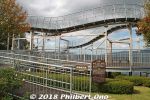
Amanohashidate Viewland has this elevated walkway to view Amanohashidate. Not good if you're afraid of heights.
|
|
|
|
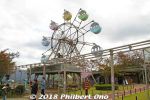
This small ferris wheel at Amanohashidate Viewland is visible to the naked eye from across the sandbar.
|
|
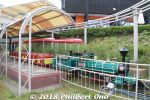
Besides having lookout decks, Amanohashidate Viewland is a small amusement park for kids.
|
|
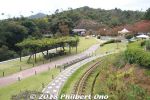
Amanohashidate Viewland's amusement park for kids.
|
|

Map of Amanohashidate Viewland amusement park.
|
|
|
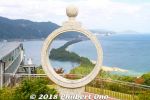
Another Circle of Wisdom at Amanohashidate Viewland.
|
|

About the Circle of Wisdom.
|
|
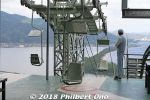
Chairlift down.
|
|
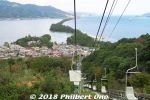
Chiarlift down from Amanohashidate Viewland.
|
|
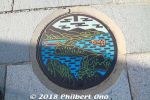
Amanohashidate manhole is based on the view from the southern end.
|
|
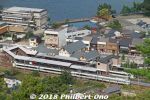
Amanohashidate Station as seen from Amanohashidate Viewland.
|
|
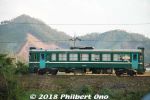
Kyoto Tango Railway (abbreviated as "Tantetsu") is the dominant train network in this area.
|
|
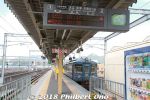
At JR Fukuchiyama Station, Kyoto Tango Railways operates a special tourist train named "Aomatsu" to Amanohashidate. It's just one train car.It's a cafe train that serves drinks and light meals.
JR Fukuchiyama Station is a major gateway to northern Kyoto Prefecture because it is a terminal station for Kyoto Tango Railway, the dominant train network in this area.
|
|
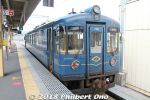
The Aomatsu train runs once every morning (10:17 am) and afternoon (3:17 pm) from Fukuchiyama Station to Amanohashidate Station and requires no reservations or extra train fare.
|
|
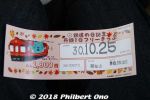
This Kyoto Tango Railways one-day train pass is a good deal.
|
|
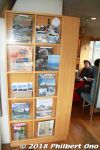
Enter the Aomatsu train and see this rack of tourist pamphlets.
|
|
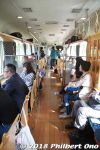
Aomatsu is special because the interior is wooden and it has a variety of seating (train fare is the same for all seats).It's a cafe train and you can order drinks (including alcohol) and light meals. No reservations required, and it's all non-reserved. Train fare is the same as regular trains.
|
|
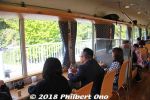
Window seats at the counter.
|
|
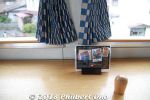
Counter seat with a knob to hold on to.
|
|
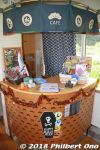
There's a staffed bar where you can order drinks and food.
|
|
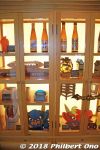
Wooden showcase.
|
|
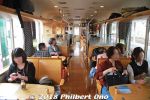
Cafe-type seats (wooden) with a table.
|
|
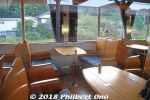
Cafe-type seats (wooden) with a table.
|
|
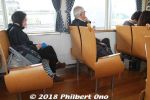
Toward the front of the train are regular seats.
|
|
|
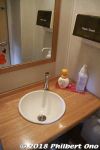
Bathroom sink.
|
|
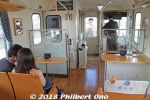
Front of the Aomatsu train.The Aomatsu train runs only twice a day from Fukuchiyama to Amanohashidate taking about an hour. Love this train.
https://trains.willer.co.jp/matsu/aomatsu.html
|
|
|
|
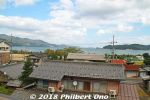
View from the Aomatsu train.Kyoto Tango Railway has another cafe train named "Akamatsu" that runs twice a day (except on Tue. and Wed.) between Nishi-Maizuru and Amanohashidate. But this train requires reservations.
https://trains.willer.co.jp/matsu/akamatsu.html
There's also the "Kuromatsu" restaurant train that runs on Fri., Sat., Sun., and national holidays. You can order a full dinner or confections or sake. The train fare includes the meal or drinks and obviously will be much more expensive than regular train fare.
https://trains.willer.co.jp/matsu/
|
|
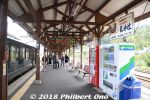
Amanohashidate Station
|
|
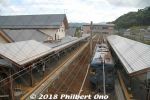
Amanohashidate Station
|
|
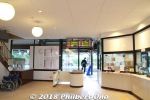
Inside Amanohashidate Station. Nice station with luggage lockers and English-speaking tourist information desk.
|
|
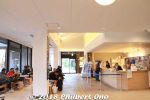
Inside Amanohashidate Station.
|
|
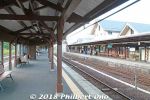
Amanohashidate Station plaform.
|
|
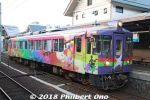
Amanohashidate area has all these neat, painted trains.
|
|
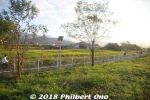
On the train back.
|
|
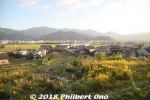
On the train back.
|
|
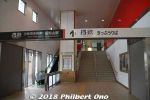
At Fukuchyama Station, the entrance to the Kyoto Tango Railway platform.
|
|
|
|
|